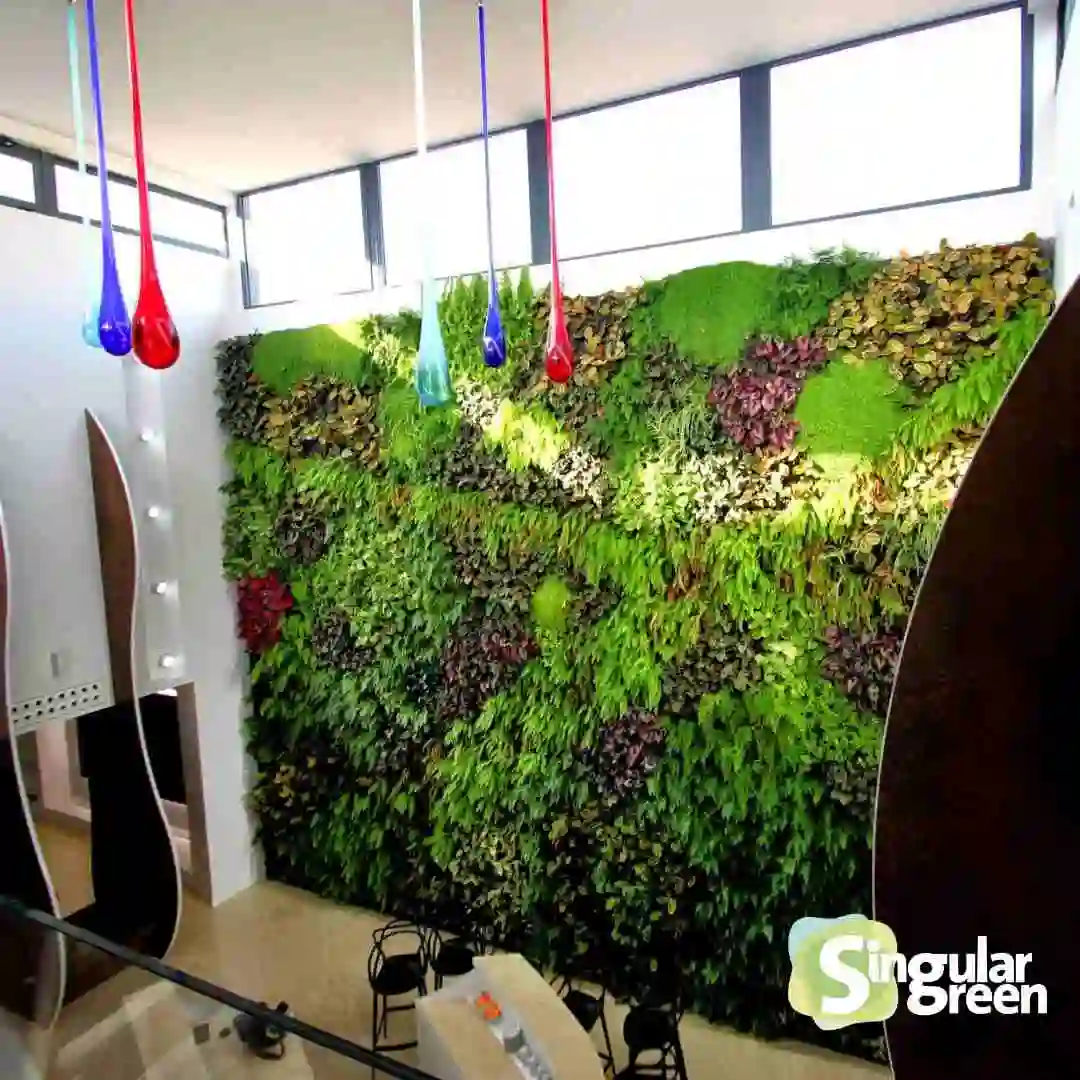In this article we are going to show you how to make a vertical aquaponic garden, using as an example the vertical garden we made in February 2016 at the Cap Negret hotel: The largest aquaponic vertical garden in Spain.
We are going to give you as much information as possible in the format that this article allows, but if you need more information do not hesitate to sign up for our vertical garden courses.
Aquaponics
Aquaponics is a technique that allows us to use the waste produced by the fish in the pond as fertilizer for the vertical garden. To do this, we need to use the nitrogen cycle to our advantage.
How do we do this? The fish waste in the pond rots and transforms into ammonia, ammonia is toxic for the fish, if we do not remove it, it will accumulate until it damages the life in the pond. We need to convert ammonia into nitrate, the main fertiliser for plants.
Diagram of the vertical aquaponic garden
Using a recirculation pump we drive the water from the pond through a biological filter, this pump must be designed to work 24 hours a day and keep the ecosystem in continuous operation, it must be a high flow, low pressure and low consumption pump.
Aquaponic garden filter
In the biological filter we transform the harmful ammonia into nitrate.
In this case we have used a kaldnes filter but there are other types of biological filters, the filter material is made up of thousands of small pieces (kaldnes) whose aim is to create as much surface area as possible for the nitrifying bacteria (Nitrosomonas and Nitrobacter) to settle on, they are the ones that transform ammonia into nitrite and then into nitrate. To carry out this transformation we only have to provide the bacteria with what they need to live:
- Ammonia, produced by fish waste.
- Oxygen, which we introduce by supplying air through a compressor.
- A surface on which to live, in contact with the ammonia and oxygen. The more surface area we provide, the more bacterial colonies will be created and the more capacity the biological filter will have. This large surface area in a small volume is provided by the kaldnes parts.
Once the nitrate is obtained, the water containing it is used to irrigate the vertical garden, using an irrigation pump that pumps the nitrate-laden water from the irrigation tank to the vertical garden.
Nitrate is the main macronutrient that the plants feed on, they are responsible for absorbing it and removing it from the ecosystem, the water returns to the pond completely purified and suitable for the life of the fish.
Construction of the aquaponic vertical garden
In the construction of the vertical garden we have used the following elements:
- Aluminium profiles, necessary to create a separation (air chamber) between the base wall and the vertical garden as an added safety to prevent any humidity from affecting the building.
- SG-P10 waterproof panel, resistant to acids, fertilisers and anti-roots.
- SG-M500 textile substrate.
- Selected plants. Below is a list of the species used.
It is very important to use an inert substrate such as our SG-M500 substrate as the frequent circulation of water through the substrate would damage other types of organic substrates and, by extension, damage the plants which would no longer be able to fulfil their function within the ecosystem.
Here you can see an image of the newly planted aquaponic vertical garden so that you can appreciate its evolution from February 2016 to September 2016.
Why do we use aquaponics?
In this project the initial proposal was to install a small pool to supply the central waterfall of the vertical garden, a chlorinated pool.
Our decision was to unite the pool and the vertical garden bringing mutual benefits, with the aquaponic system the vertical garden does not need fertiliser; the vertical garden purifies the pond water, eliminating the need for chlorine.
Aquaponics has a number of advantages over hydroponics for vertical gardens:
- Optimal absorption of fertiliser by the plants. The natural fertiliser produced by the ecosystem can be absorbed by the plants more easily than other fertilisers of chemical origin.
- The nitrifying bacteria that are formed in the whole ecosystem, not only in the biological filter, hinder the entry of pathogenic bacteria, improving the plant health of the vertical garden.
- Decrease in maintenance, phytosanitary treatments, pruning, due to the recreation of an autonomous ecosystem that regulates itself, making the need for human intervention to maintain it minimal.
Selection of plant species for a vertical aquaponic garden
The garden is located to the north of the hotel and part of it is located under the walkway, so the plant species selected are shade species. They are also species with low nutrient requirements, mostly ferns, as one of the objectives of the project was not to use fertilisers.
- Chlorophytum comosum
- Ficus repens
- Nephrolepis cordifolia
- Adiantum capillus-veneris
- Phlebodium aureum
- Plectranthus verticillatus
- Cyrtomium falcatum
- Davalia canariensis







